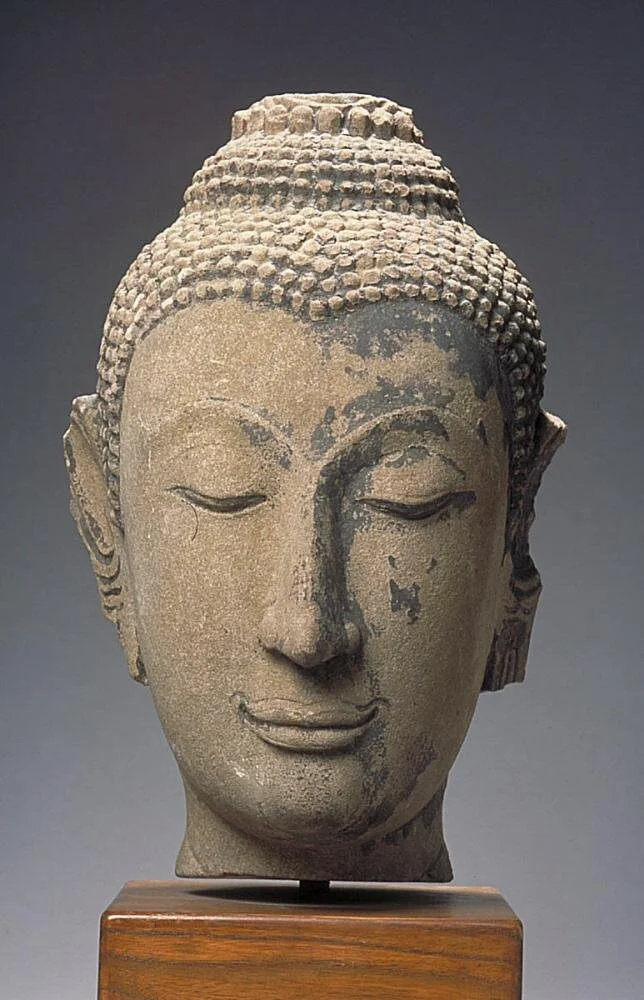Now Watching | The Mark of Empire presented by Peter Lee
Singaporean curator and scholar Peter Lee explores the history of four Southeast Asian empires that made their mark on the world. Travelling from Thailand, Myanmar, Cambodia to Indonesia, Peter explores ancient ruins, epic legends and vibrant traditions to chart the rise and fall of four distinct empires, and how their legacy still shapes cultures and identities in the region today.
Watch full episodes of The Mark of Empire
Thailand’s Ancient Modern Kingdom | Ayutthaya
The city of Ayutthaya was the capital of a mighty empire that once controlled large parts of Myanmar, Laos, Cambodia, and Vietnam. A cosmopolitan centre of over a million residents, it was one of the wealthiest cities in the eastern hemisphere, and even compared to Paris. Host Peter Lee travels through Thailand to explore the secrets of how this empire grew to be powerful. From ancient crypts that depict its growth as a trading nation, to elephants and a unique martial art used in battles to defend the kingdom, Peter explores how Ayutthaya grew into a prosperous trading hub, that attracted merchants from all over the world from Japan in the east to Great Britain in the west. So much so that foreign influences of Ayutthaya’s golden age still lingers in Thailand’s culinary traditions.
Myanmar’s Unifying Kingdom | Bagan
The Bagan Empire was first to unify the territory of present-day Myanmar under Burmese language and culture, that grew into a world-renowned centre of Buddhist learning. Host Peter Lee learns how its fabled king, Anawrahta, overcame the dry conditions of his land by taming rivers into canals and weirs which are still used today. As a bigger harvest grew his population, Bagan was ripe for expansion, and Peter takes part in the traditional elephant dance that celebrates a Buddhist pilgrimage of King Anawrahta’s. While the Bagan king wished to turn Bagan into a new Buddhist state, Peter heads to a sacred mountain to see the battle that unfolded between Buddhism and Myanmar’s indigenous animist gods, called Nats. It's expansion transformed Bagan into a capital of diverse peoples, who each brought their own in founding a new Burmese culture and identity. And the legacy of its temple building still lives on in a strong faith that’s practiced among the Burmese people today.
Cambodia’s Temple Kingdom | Angkor
A thousand years ago, the Angkor Empire conquered large swathes of Southeast Asia to become one of the region's greatest powers. Host Peter Lee journeys through Cambodia to learn how life in Angkor still revolves around the ebb and flow of the floodwaters that come with the yearly monsoons, and how the ancient Khmer overcame the environmental challenge and became masters of engineering, building canals and reservoirs to act as flood defences and irrigation channels to boost their rice harvests. The Khmer also built a network of roads to exert their authority far and wide, and created a social system of education, taxation, and even healthcare that revolved around temples. Peter visits the Angkor Empire's crowning glory — Angkor Wat — the world's largest religious monument to see how it was built, and how intricate carvings detailing life a thousand years ago are linked with a modern Cambodian tradition.
Indonesia’s Spice Kingdom | Majapahit
The Majapahit Empire was the largest empire in Southeast Asia & the centre of the world-famous Spice Trade that stretched from China to Europe. Host Peter Lee starts off on the island of Java to see why it was so suited to cultivating rice, used to make exchanges with merchants from the Spice Islands. As demand for spices took off around the world, geography and timing of seasonal sailing winds saw Java grow into the centre for the global spice trade, which enriched Majapahit with luxury trade goods from all over the world. With increased riches, the empire is said to have unified Indonesia’s islands into one nation. Peter travels to Sulawesi to see why the relationship between Majapahit Java and its outer islands was more nuanced than conqueror and subject. Today, the legacy of a united Indonesia under the Majapahit still looms large, where different groups hark back to the era in the face of increasing intolerance and conflict within the island state.
Peter Lee
Peter Lee is an independent researcher, and the Honorary Curator of the NUS Baba House — a historical house museum managed by the National University of Singapore.
He co-authored The Straits Chinese House with Jennifer Chen, published by the National Museum of Singapore in 1998 and 2006. In 2008, he produced Junk to Jewels — The Things that Peranakans Value, an exhibition and catalogue for the Peranakan Museum. He co-curated Sarong Kebaya, which opened in April 2011 at the same museum and a book he wrote on the subject was published in 2014. In 2018 this book was shortlisted for the Singapore History Prize. The 2013 exhibition Inherited and Salvaged: Family Portraits from the NUS Museum Straits Chinese Collection was comprised largely of portrait paintings he had assembled. He also contributed an essay to the exhibition catalogue that was published in 2015. In 2016, he co-curated Singapore, Sarong Kebaya and Style at the Fukuoka Art Museum and the Shoto Museum in Tokyo. He was the guest curator of Port Cities: Multicultural Emporiums of Asia, 1500-1900 at ACM, which opened in November 2016, and co-authored its exhibition catalogue. In 2017, he was the historical consultant for a Peranakan-themed short film launched at the Singapore Changi Airport Terminal 4. Peter was also the guest curator of Amek Gambar: Peranakans and Photography, an exhibition held at the Peranakan Museum from 2018 to 2019. In 2020, The Mark of Empire, a four-part documentary in which he features as the series’ host, was broadcast regionally by Channel News Asia, Singapore, and uploaded on YouTube.









